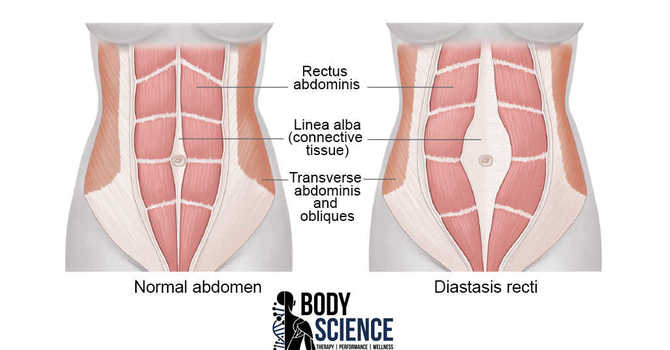
What is it and how can a chiropractor help?
Diastasis Recti is a separation of the left and right sides of the abdominal muscles. It is common is many postpartum women. For many, it resolves on its own. However, if it has been 4-6 weeks and there has been no change, it may be time to see a physiotherapist, or a chiropractor! This condition can also occur in infants, older women, and men, however it is most common in pregnant and postpartum women.
How is it diagnosed?
- Thorough history
- Physical examination involving palpation and assessment of certain daily movements
How does it feel?
For most women, the worst feeling it while picking up their babies, getting out of bed, or rotation from side to side. Due to the fact that these activities engage core muscles, it can strain the muscles that have become weakened from separation. Many women also worry about the appearance of diastases recti, which can take a toll on many women who may already be battling postpartum depression.
The following symptoms are most common in those with diastasis recti:
- A separation of the rectus abdominis muscles that is visible and felt by touching the stomach. Doming/tenting of the stomach may also occur.
- Feelings of “flabbiness” in the stomach muscles.
- Low back, pelvic, or hip pain.
- Poor trunk posture.
- Feeling weak through the midsection.
How can chiropractic help?
- Education on how to modify daily activities, and what to avoid while recovering
- Postural training and learning to engage the deep core muscles through posture and breathing. The muscles involved (a few) are transverse abdominis muscles, diaphragm, low back muscles, and pelvic floor muscles.
- Exercises to strengthen the core
- Pain relief techniques
Furthermore, chiropractic care can help gear you for success in the future and reduce the risk of causing diastasis recti again later in life!
